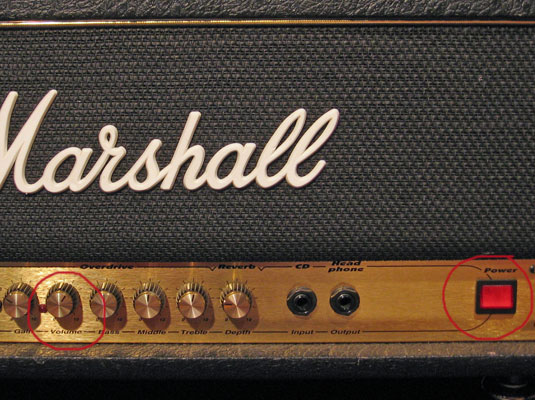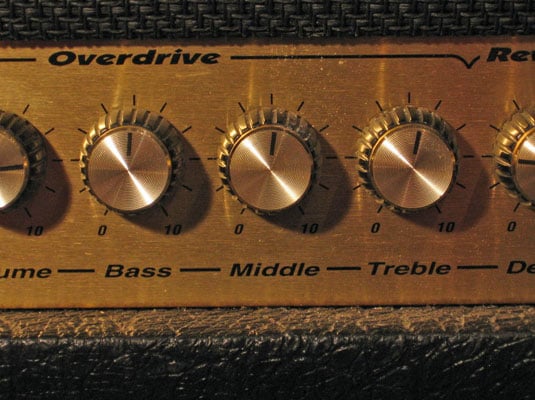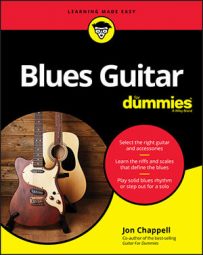It is important to know how to test an electric guitar amplifier before you buy one to ensure that it meets your needs. When choosing an amp, you need to take several things into consideration, such as tone, distortion, features, and budget. Without testing it, you can't fully evaluate the sound that it creates. Before you buy it, you should plug in the amp and give it a try.
You should inform the salesperson at your local music store that you intend to try the amp before you buy it. He or she may even make preparations for the impending noisiness. Many music stores have a separate room for just such high-volume noise-making. You'll need to check an amp's sound at varying volume levels, but try to keep the time when you're cranking out maximum decibels short.
Check that the amp is plugged into the wall or into a power strip and that the outlet is live.
Outlet issues can sometimes be an obstacle in places where the outlets are controlled with a switch.
Find the volume knob(s) and turn them all the way down — usually fully counterclockwise.

Remember that some amps have more than one volume knob, and they might have a lot of other knobs besides. Turning the volume all the way down ensures that you don’t produce any sudden loud noises, which can, at the very least, scare and disturb people around you and, at worst, blow a fuse or damage the speaker.
Plug in.
A guitar amp won’t do much without an electric guitar plugged into it.
Flip on the power switch.
Many amps have a light that shows that the amp is on.
Turn the tone controls — bass, middle, and treble — to their midway point.

Midway is generally at about 12:00 if you picture the dial as a clock. This ensures that you get a neutral, uncolored sound from the amp.
Play around and listen.
Play a few licks on different parts of the guitar, and at different volumes and tone levels. Listen for unwanted (or desired?) distortion.

